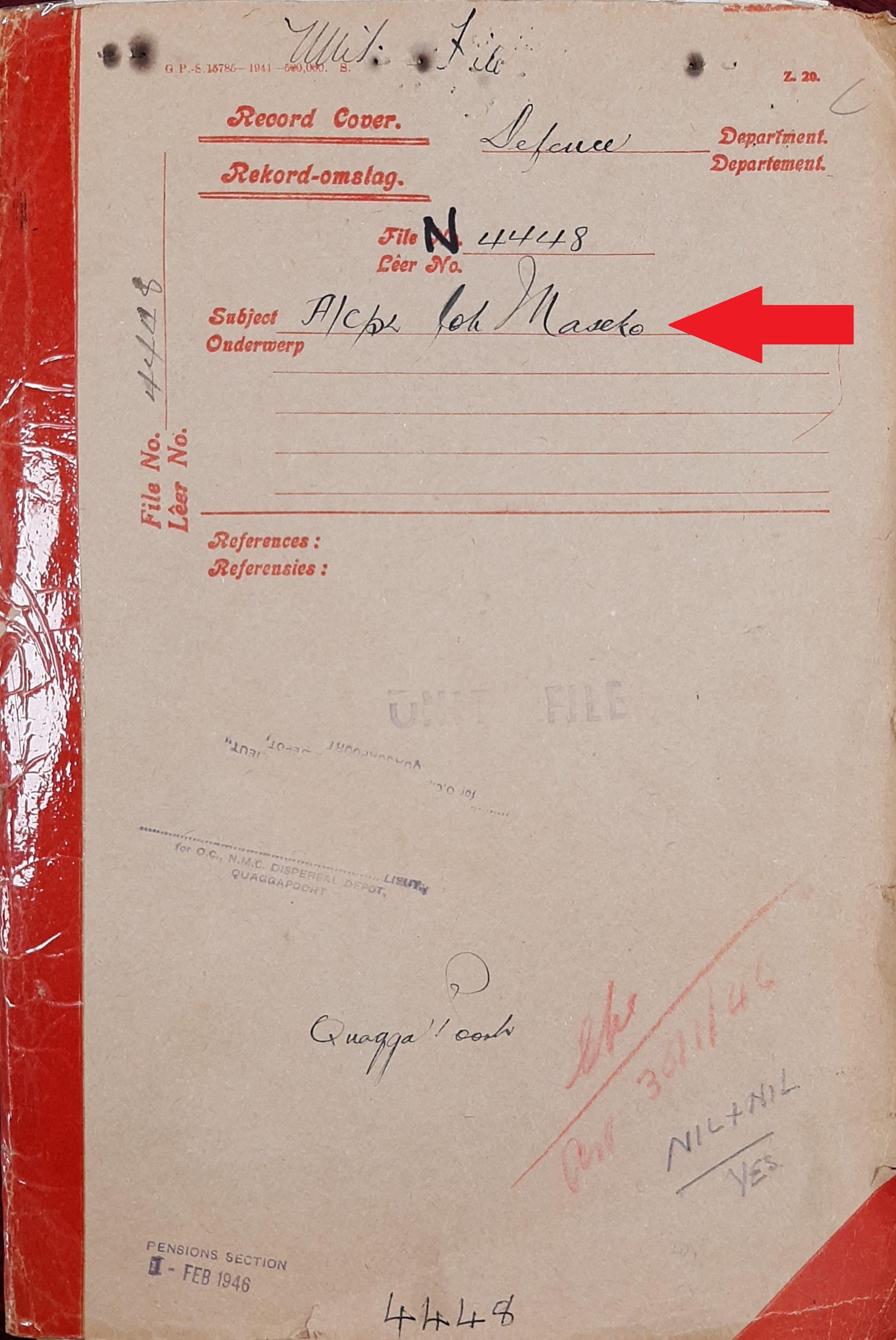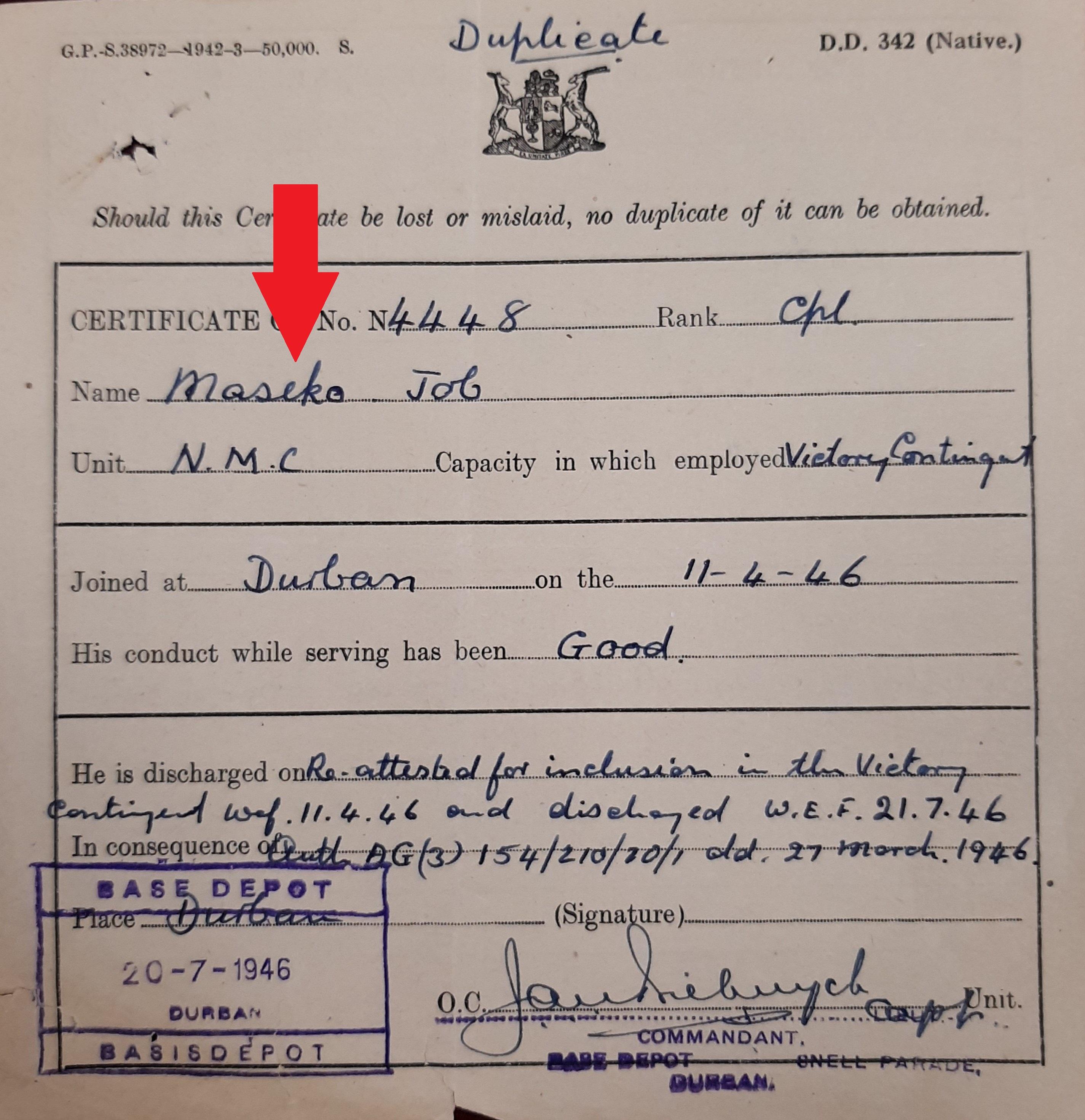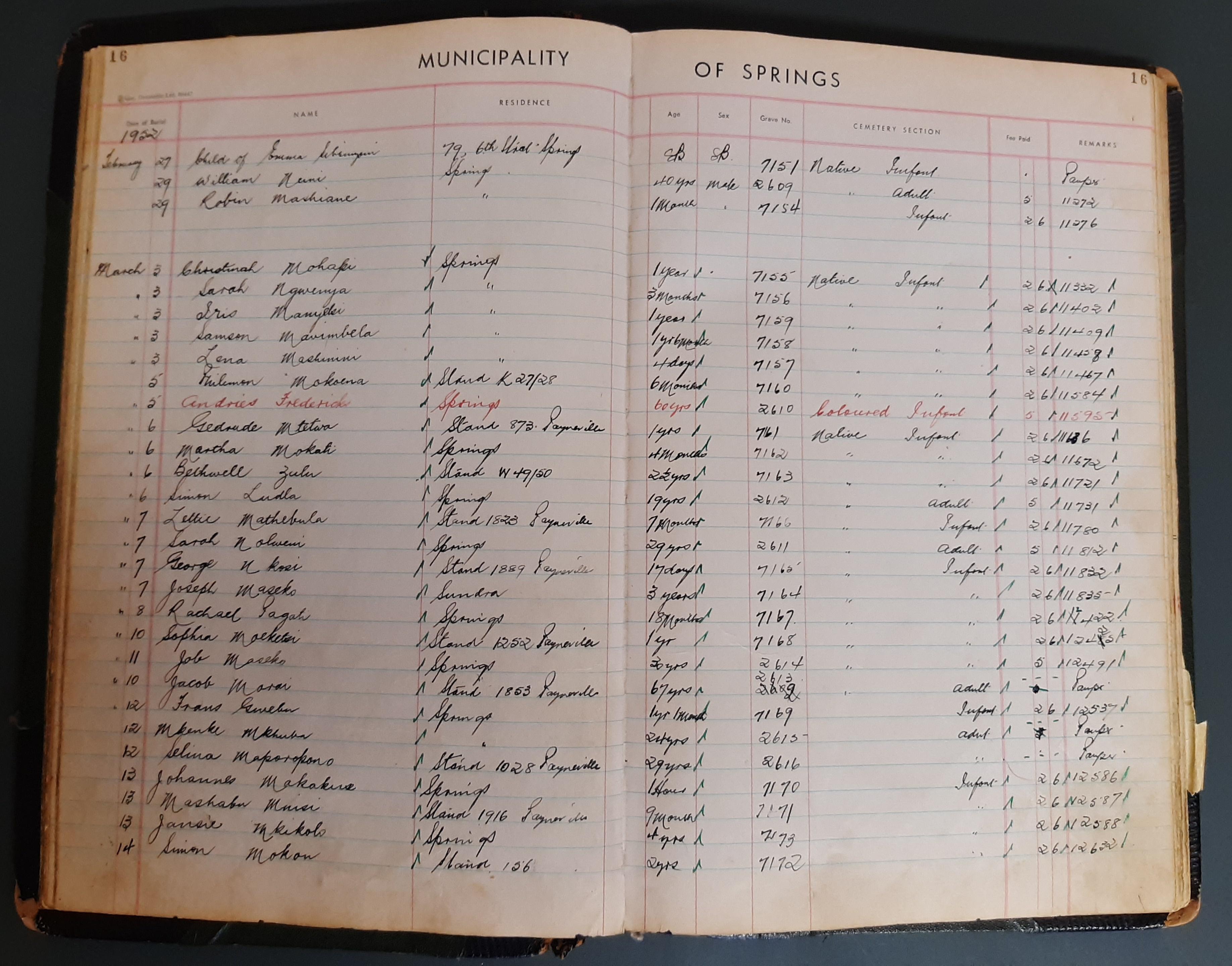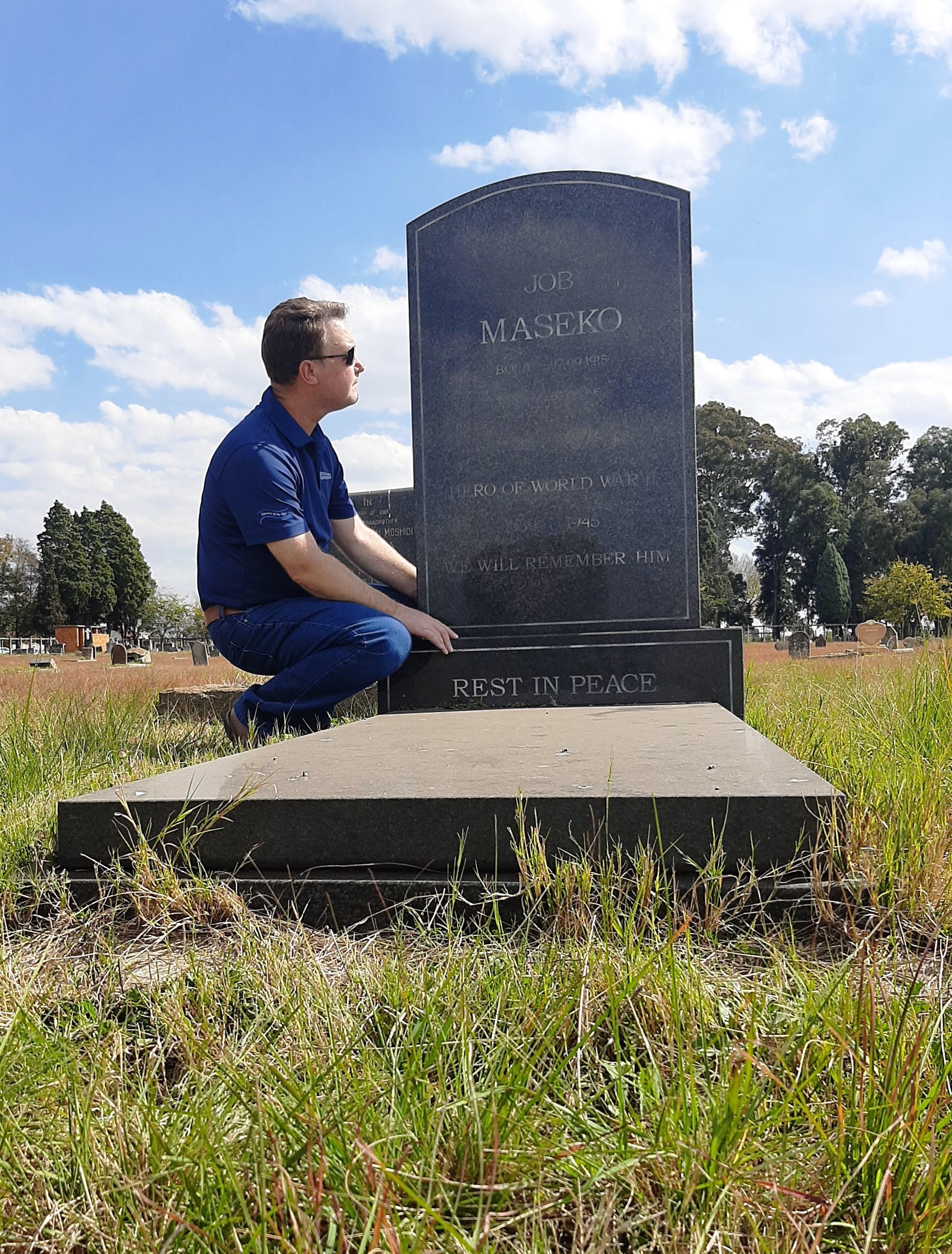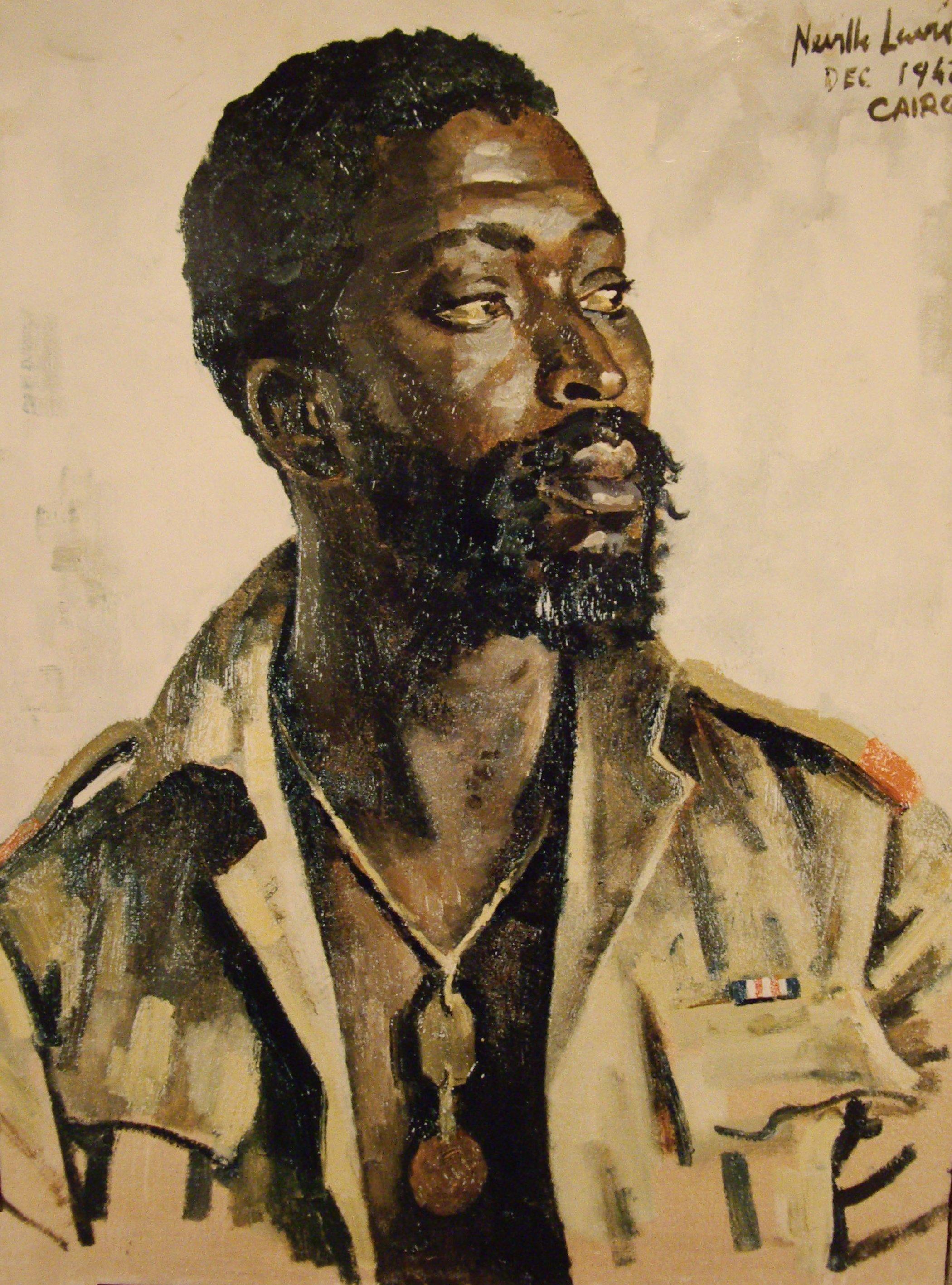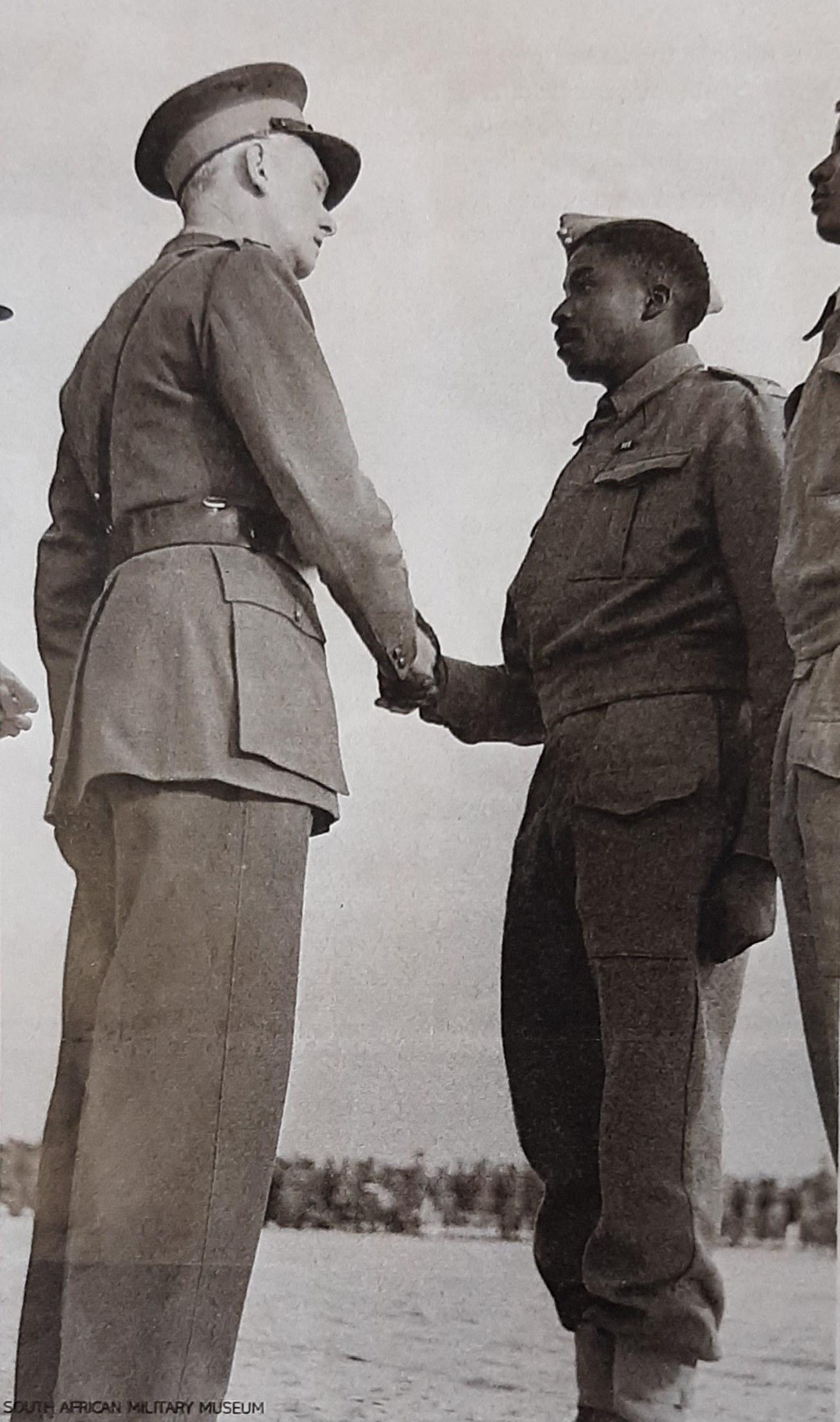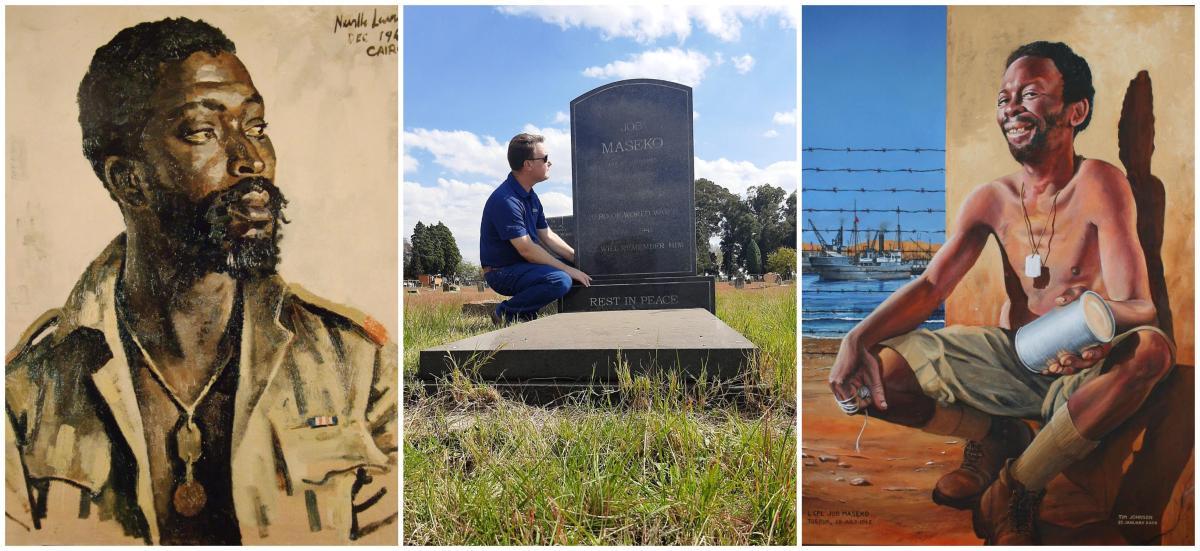
Disclaimer: Any views expressed by individuals and organisations are their own and do not in any way represent the views of The Heritage Portal. If you find any mistakes or historical inaccuracies, please contact the editor.
In line with the important political reforms of 1994 and in time for the International Fleet Review of 1997, the Ministry of Defence initiated the renaming of nine South African Navy Minister class strike craft on 28 February 1997. On 1 April 1997 strike craft P1568 SAS Kobie Coetsee was renamed SAS Job Masego [sic]. Boat 8 – as it was more commonly referred to – remained in commission for another two years until 5 November 1999 when it was disposed of and eventually sold for scrap in 2008. In a further act of remembrance, the SA Navy also named its officer’s wardroom in Simon’s Town – the Job Masego Wardroom. This wardroom was previously known as “Rhodesia-by-the-Sea” after a former hotel built by the Rhodesian government in the 1950s.
But since the renaming in 1997, the correct spelling of Job Maseko’s surname, i.e. whether it should be spelled ‘Masego’ or ‘Maseko’ has often been contested, most notably by those living in members of the wardroom. The matter was brought to the fore this year and Chief of the Navy requested the Navy Command Council to resolve this ambiguity once and for all. The Officer-in-Charge of the Naval Museum was therefore tasked by Chief of Fleet Staff to determine the correct spelling of the surname and associated nomenclature and to provide guidance and recommendations for further actions to remedy the fault.
To conduct the necessary research, the historian Commander Leon Steyn therefore visited the DoD Archives in Irene in early May this year. This is where Job Maseko’s military personnel file is kept that contains information of his military service, from the date of his attestation on 29 August 1940 to his final discharge on 21 July 1946. At closer inspection, the file contained reference to both variations of the surname – Maseko and Masego. Earlier documents on the file featured the Maseko variation, while later documentation – mostly connected to the award of the Military Medal in late 1942 – featured the Masego variation. It was noted that Job Maseko never completed any documentation himself, nor could his signature be found on the file – in one instance his finger print appeared on a document as a form of identification. A personal statement given by him, describing his actions at Tobruk, recorded his surname as Maseko.
Maseko personnel file
Misspelling of surnames seemed to be a common feature. Indicated as his next of kin, his wife’s surname was recorded as “Masigo”. This inconsistency also showed up in the file of another war hero Lucas Majazi. On his personnel file his surname was recorded as Majazi, Majozi and even Mafazi!
The South African National Museum of Military History in Johannesburg was the next stop, where a small Native Military Corps (NMC) display is located and where more documentation related to Job Maseko is kept on file in the library. Various newspaper articles that appeared after the war refer to him exclusively as Maseko, including an excellent article ‘Forgotten Hero’ by Belinda Mendelowitz that had appeared in the Drum magazine.
The next day Cdr Steyn visited the Payneville Township Cemetery near Springs where the member’s grave is located. Unfortunately the old cemetery is in a much neglected state and the Springs Municipality Grave Register had to be consulted to locate the grave. This valuable document contained the date and details of Job’s burial on 11 March 1952 – and here his surname is recorded as Maseko. The long search for the grave was rewarded when the name of Job Maseko appeared handsomely on a large headstone, situated almost in the middle of the field. A few moments was used to pause at the grave and observe the legacy of this soldier who had passed away seventy years ago.
The Springs Cemetery Register 11 March 1952
Cdr Steyn at the Maseko grave
Kwa-Thema township outside Springs was the last stop where the Job Maseko Primary School is located. The entrance to the small school is adorned by two colourful paintings dedicated to the soldier the school was named after.
Paintings of Job Maseko
The final verdict: The research visit revealed that the early content on the member’s personnel file at the DoD Archives predominantly shows the surname as Maseko. But from around December 1942 onwards, the surname was often recorded as Masego, mostly in correspondence that dealt with the award of the Military Medal in March 1943. The citation of the medal reflected the Masego spelling and it seems that this document was taken forward as a reference, especially in the Navy’s renaming case in 1997. The most plausible reason for the inconsistency on the file itself was the basic linguistic and written communication barrier that existed between the (white) admin clerks and NMC members themselves. The scribes often entered names according to the English ear. The regular transfers of members between units and headquarters compounded matters and affected the consistency and standard of administration and record keeping. Military historians are in agreement that in the rush to recruit more soldiers the NMC was furthermore neglected in this regard.
What went wrong?
So how did the “incorrect spelling” occur when the strike craft was renamed?
The submission of the 1997 name changes to the Ministry of Defence was preceded by a thorough process of research by Navy Office. The new suggested names for the strike craft were submitted to the MoD on 9 March 1997 and the correctly spelled SAS Job Maseko was one of the proposals submitted. When the ships were officially renamed by the Minister of Defence three weeks later, the spelling had however changed from Maseko to Masego. It is suspected that the MoD, ‘as a last quick check’ hastily consulted the “Masego file” at the DoD Archives before the changes were promulgated. Without any further checks the strike craft was renamed SAS Job Masego [sic] and the wardroom in Simon’s Town followed the same course.
Rectification of the nomenclature will now take place and Wardroom Job Masego [sic] will be renamed Wardroom Job Maseko. The Warrior-class strike craft SAS Job Masego [sic] is no more, but the Maseko name may be identified for future use again and in such a case the same mistake will not be repeated again.
Who was Job Maseko?
Job Maseko was born in Springs on 7 September 1915. Before the war, he worked as a miner at Vlakfontein Mine in the East Rand. He attested for service in the Second World War with the NMC on 28 August 1940
Maseko became a Prisoner of War on 21 June 1942 when Major-General Hendrik Klopper, commander of the South African 2nd Infantry Division surrendered at Tobruk with 32,000 men to Field Marshal Erwin Rommel. The garrison consisted of 10,722 South Africans of the 2nd Division of which 1,200 were Native Military Corps members. The Germans separated their prisoners by race. The white troops were sent to POW camps in Europe, but the prisoners of colour were retained in Italian POW camps in Africa where they were forced to work as manual labourers under horrific conditions. Part of the prisoners' forced labour involved loading and unloading supplies from German freight ships in the port of Tobruk. With his pre-war experience and exposure to explosives, while unloading cargo from a German freight ship in the Tobruk harbour on 21 July 1942. Maseko got three of his fellow prisoners to distract the German guards while he got busy below deck making a bomb using his pre-war mining experience. Using ammunition from which he extracted the cordite and a long fuse, Maseko put together an improvised explosive device which he stashed among jerry-cans of gasoline in the ship’s hold. While he and his fellow prisoners were taking the final load off the ship, Maseko lit the fuse and then left the ship. The ship was destroyed in the explosion and the subsequent fire. The next day the POWs were questioned about smoking while on board ship - to which they answered that cigarettes were forbidden and were not included in any rations, which could not be disputed by their Italian captors.
Maseko later escaped from the Italian POW camp in Tobruk and walked for three weeks though the desert and enemy lines to El Alamein. In October 1942 he joined in the defeat of his German and Italian captors as a stretcher bearer with the 1st South African Infantry Division in the Second Battle of El Alamein. After El Alamein he was transferred to the 6th South African Armoured Division and was gazetted as recipient of the Military Medal (MM) for his actions in Tobruk on 11 March 1943. The award of the MM was later bestowed on him by Major-General Francois Henry "Frank" Theron while in Italy with the armoured division.
Maj Gen FH Theron present L Cpl Maseko with his Military Medal
After the war, like many other demobilised soldiers, he gained little recognition in the world of civilian life. In addition, the Apartheid based general rule governing pension awards was that Coloured pension scales should amount to three-fifths and African pension scales to two-fifths of the rate applicable to whites. Most African ex-servicemen who had cherished high hopes of their post-war world were disillusioned when they could not find employment based on the new skills they had acquired in the army and that the standard of living to which they were accustomed whilst members of the South African forces were no longer applicable. For Maseko and members of the NMC, post-war South Africa was very much the same as the pre-1939 South Africa.
Maseko was struck and killed by a train on 7 March 1952 near Springs. At the time of his death, he was so poor that his funeral was paid for by borrowed and donated funds. He was buried in the Payneville Township Cemetery in Springs, South Africa.
With acknowledgement to the South African National Museum of Military History and the Department of Defence Archives
Commander Leon Steyn is the Curator of the SA Naval Museum
Comments will load below. If for any reason none appear click here for some troubleshooting tips. If you would like to post a comment and need instructions click here.

